In a modern digital world, finding ways to reach as many people as possible is of the highest importance. This way, we can increase the number of deals and keep the business growing.
If you are working with eCommerce sites, it is important to mark your presence in search engines like Google. The best way to do so is through Search Engine Optimization (SEO).
Many people get eCommerce SEO wrong, not knowing how to direct their SEO efforts. This guide to building an eCommerce SEO strategy will help you understand how to use SEO for business and develop an excellent eCommerce SEO campaign.
Thus, it’s time to go deeper into this eCommerce SEO guide and analyze the best eCommerce SEO strategies.
What is an eCommerce SEO Strategy?
This kind of strategy combines technical SEO methods to make you appear in Google searches and stand out from other eCommerce websites. The main goal is to get more traffic, conversion rate optimization, and generate sales.
To reach this objective, every company must understand how SEO works and apply SEO techniques to make it stronger and appear in the organic search results. To know what to improve in your SEO, remember to perform a site audit regularly. This way, you’ll check how Google-friendly your website is.
This strategy is vital because SEO lets you rank without investing in paid search, which is far more expensive. Using SEO makes you get better results without a huge money investment.
Developing Your On-Page SEO for eCommerce
There are many things to cover in this guide to eCommerce SEO. We will focus on on-page SEO since the Off-page SEO is out of your control. The first thing you should be looking at to improve your search engine rankings and general search traffic is keyword research. Using proper words and phrases is one of the key factors determining almost everything you do to rank higher.

Perform the Right Keyword Research
This is fundamental for many eCommerce platforms because looking for product-focused keywords will let you find keyword ideas for your eCommerce website. The eCommerce keyword research will help you with:
- Your Primary keyword
- Long Tail keywords
- LSI keywords
There are some things to look at when choosing the right keywords. First, it would be good to have the help of an SEO tool, such as Google Keyword Planner, Google Search Console, or Semrush.
While choosing keywords, the first thing you can do is use your competitors to find the best keywords to target. The search bars of other sites like Amazon are perfect for finding relevant keywords you can use in your eCommerce site.
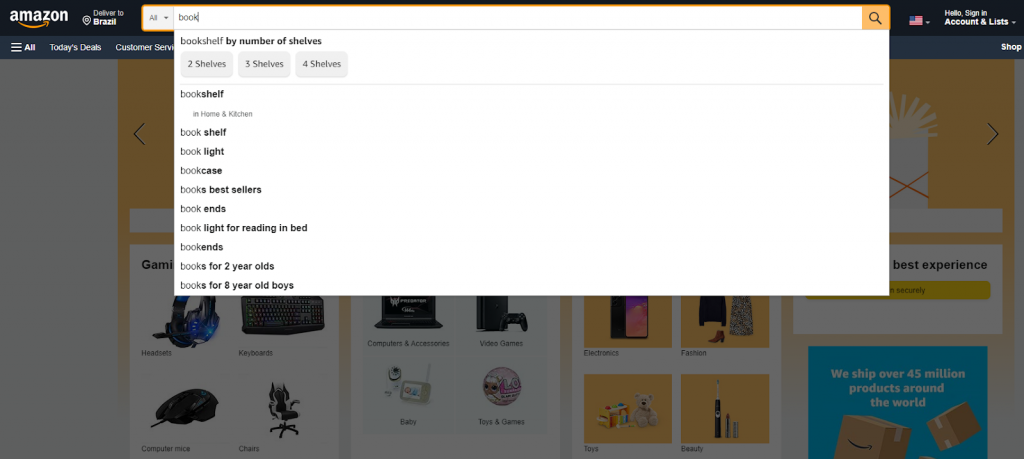
After you put your seed keyword in the bar, it will give more keyword ideas with high search volume on their website. It shows you how to name your product and gives you ideas for titles and meta tags that will improve your search rankings in a Search Engine Results Page (SERP). That’s why it is so important to map keywords for your eCommerce Stores. However, mind that keyword stuffing can bring a relevant page down in Google’s search results.
It will be easier for you to rank if you have a specific group of target keywords known as long-tail keywords. These are long-term words that don’t have great research numbers (so they are less competitive) but keep a good level of search for a long time and a great buyer intent. Thus, focusing on long-tail keyword groups will surely help.
This kind of research will also help you get LSI keywords (terms related to your target keyword that can improve your ranking). Remember that if you have something special about your product, it can give you unique keywords to use and grow in the search engine results pages.
What to Look at When Searching for Keywords?
The first thing is search volume (the number of searches in a specific period) which tells you if a keyword is worth the investment. It changes from business to business, and it’s up to you to know if they are suitable for your eCommerce store. Google Keyword Planner (GKP) is an excellent free tool that determines the search volume of each keyword you use.
Second, your business and the words you pick must be related. Keywords that are not in your niche will only decrease your eCommerce site ranking.
Third: find words with good commercial intent. GKP gives you the competition rate for every keyword, which means how much your competitors invest in Google ads or other paid ads for that word. A bigger investment resembles a bigger profit potential.
The last is the keyword difficulty. It shows how hard it will be for your main keyword or any other keyword related to it to rank high in the first SERP. SEMrush gives you the difficulty level on a scale of 0-100, and you must avoid numbers close to 100, as it will be impossible to rank high.
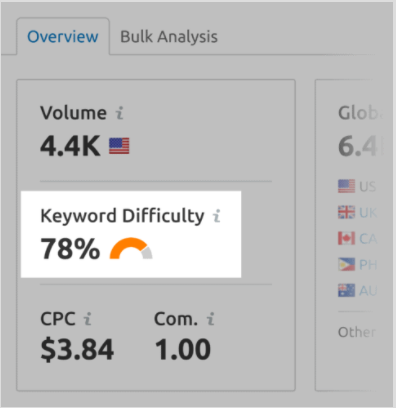
Work on Your eCommerce Site Architecture
Let’s see another main topic: site architecture, one of the most important eCommerce SEO techniques. Most sites have a specific structure that helps the search engines understand them. A messy design impacts your entire site.
The key point in a good structure is that it improves the UX (User Experience), which Google pledges most when ranking any website. Check our post about How UX Impacts your SEO.
This technical SEO strategy refers to setting up your eCommerce product pages, category pages, and navigation. It’s important because eCommerce sites have too many other pages, and all of them must be well-ranked. Let’s see a few things you can do to improve structure.
Two main topics are critical in eCommerce platform page architecture:
- First: keep things simple and scalable.
- Second: never keep a page more than three clicks from the main one.
Each page’s authority is determined by how “far” it is from the main page, which means that category and product pages are the ones that usually lose authority since they are the furthest. With that in mind, to fix a bad site architecture, you must bring them as close as you can from your main page.
So, most eCommerce sites will like to be organized this way:
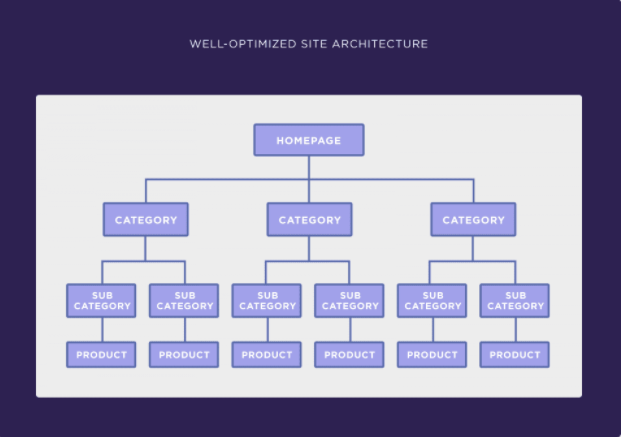
In a well-optimized architecture, the category page comes right after the homepage. Usually, all eCommerce category pages should be right after the main one, followed by one layer of sub-categories and, then, the product page layers.
The product category pages will have a low authority in a badly-optimized structure since everyone will take longer to reach them. When people search for a product page, they must get to it as fast as possible.
eCommerce Website Optimization
There are some things that eCommerce site owners can do to make their pages rank better. Search engines like well-optimized eCommerce pages, so let’s take a look at what can be done to grow in the SERPs:
Optimize Your Title Tags, Meta Descriptions, and URL
You must add your main keywords to your title tag, but it is also important not to stop there. Adding long-tail keywords will attract more attention to e-Commerce websites and improve the search results of the store, bringing targeted traffic to your e-Commerce websites.
Some long-tail competitive keywords you can use are: “cheap,” “buy,” “deals.” They will undoubtedly result in more organic traffic for your eCommerce Store. Here is a list with other words:
- Best
- Free Shipping
- Online
- Review
- Guarantee
- Lowest Price
- Overnight Shipping
- Sale
An eCommerce business that uses them will get the most traffic, becoming Google’s and other search engines’ top pages.
A good meta description should be as precise as possible and stay close to 150 words. You can also use the space to put informational or semantic keywords that go well with your content.
In the URL matter, you must focus on creating short, keyword-rich URLs. Long URLs are one of the most common technical SEO issues, as they are hard for Google’s crawlers to read. Ecommerce pages generally have longer URLs, but it doesn’t mean you should pass the 50-word count.
Here is an example of a good URL: https://example.com/category/subcategory/product.html
You should include only one or two keywords for your category, moving forward to a subcategory with one or two keywords again. Then, finish with your product.
If you want to keep constructing your SEO success, don’t use capital letters and special symbols. It will also be good to avoid numbers, as they also confuse Google’s crawlers.
Link Building and Image Optimization
Internal linking structure is a critical SEO factor. Many eCommerce sites link important pages related to the one already visited to create a navigation flow. Let’s look at some essential things to consider when you build links.
An internal linking strategy is vital because online business generally doesn’t get many backlinks pointing to them. Always add relevant internal links pointing to other products or more information to develop a good internal link structure.
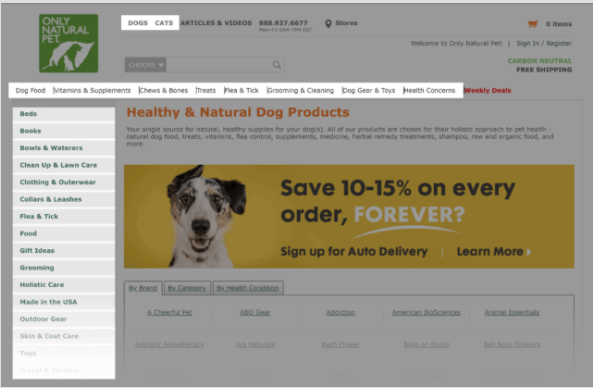
You can find sites linking to your competitors’ pages to find new ways to get backlinks. First, while building links on your website, remember to look for a way to increase your product and category link authority. Secondly, always check if you’re not adding broken links.
Images also help develop your site structure, and for e-Commerce websites, they are vital since your target audience will always choose to buy from a page with a product image. They also help your client to “breathe” during the page reading.
Always use images highly related to your product, and don’t forget to optimize their alt text. They help Google understand what images are showing and are a good place to put even more keywords. To finish, remember to have a file name that describes the product instead of something like “IMG01.”
Focus on Mobile-Friendly and Fast Pages
One of Google’s new metrics is the mobile site rating, which started interfering with general rankings in computers. Thus, as a part of your digital marketing efforts, you must pay attention to mobile optimization to keep your site as mobile-friendly as possible. If you need help with that, check this guide about 7 tips for mobile website optimization.
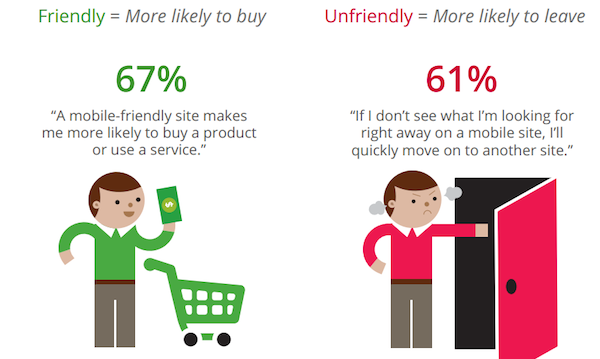
Another thing to keep an eye on is the site speed. You must look into having a fast and responsive website. Pay attention to page load speed because Google understands that people don’t lose more than a few seconds waiting for a page to load. If yours takes too long, you will fall in the SERPs.
To increase your page speed, remove all unnecessary elements from your page, such as huge background images. Plugins and addons that don’t contribute should be removed too.
Developing Well-Optimized Product Pages
Optimizing a product page is one of the most challenging tasks in SEO, but it is also one of the most important aspects. It is difficult because you must have extensive, high-quality content for each of your products.
Keyword usage is also vital, so don’t forget to spread your words into your text and look for LSI (Latent Semantic Indexing) words. To get into these numbers and avoid thin content pages, detailed product descriptions, FAQ sections, and product reviews are helpful.
You also want to write unique content for every page. It may be even more complicated if you have lots of products, but it’s worth the effort. In eCommerce, it’s a common practice to copy product descriptions from the manufacturers’ websites, leading to multiple pages having the same descriptions. To stand out, create unique descriptions for your products, and Google will reward you.
Schema Markups for SEO Improvement
Using a schema markup will also help you to rank well in the SERPs. They are a specific language of structured data that helps Google better read your page and rank higher. SEMrush is one of the best free eCommerce SEO tools to review schema markup.
Schema also helps with the rich snippets, which are information given below the page title, such as the number of reviews and prices. Understand that if you make it easier for Google to identify pages’ content, you will be better-ranked.

Avoid Duplicate Content, Duplicate Title Tags, and Junk Pages
Google penalizes duplicate content, and many eCommerce websites have multiple pages with no use or return to them. It’s essential to look at all your pages and determine which of them are truly valuable. The remaining ones must be deleted or deindexed.
Using a Blog to Rank and Attract More Potential Customers
A blog post can be a great way of using keywords to improve your site ranking. It can also help you drive the search intent from “searching” to “buying.” Let’s imagine an eCommerce store selling gaming gear. Blog content about the top 10 mechanical keyboards can make your user go from search queries with informational keywords about keyboards into buying one of your products.

You can contact us if you need help writing high-quality articles and SEO in general. At GamerSEO, we have the expertise to take care of your blog and ensure it will rank in the SERPs in a couple of months.
Do you want to know more about content marketing for eCommerce? Find out why you should https://gamerseo.com/blog/why-have-a-company-blog-7-fact-based-reasons/
Conclusions
These are some of the best techniques you can apply to your eCommerce to improve your Google rankings and then generate traffic and sales. Remember that there isn’t a golden book for SEO, as the known rules may change with Google algorithms, but this SEO tutorial for eCommerce is exactly what you need to start improving your business.
If you need help with your e-Commerce or any other site SEO, be sure to contact us for assistance!

SEO enthusiast and digital marketing strategist. My expertise lies in optimizing websites for organic traffic growth and search engine visibility. I carry out, among others, SEO tests, keyword research and analytical activities using Google Analytics. Privately, he is a lover of mountains and bicycle trips.

